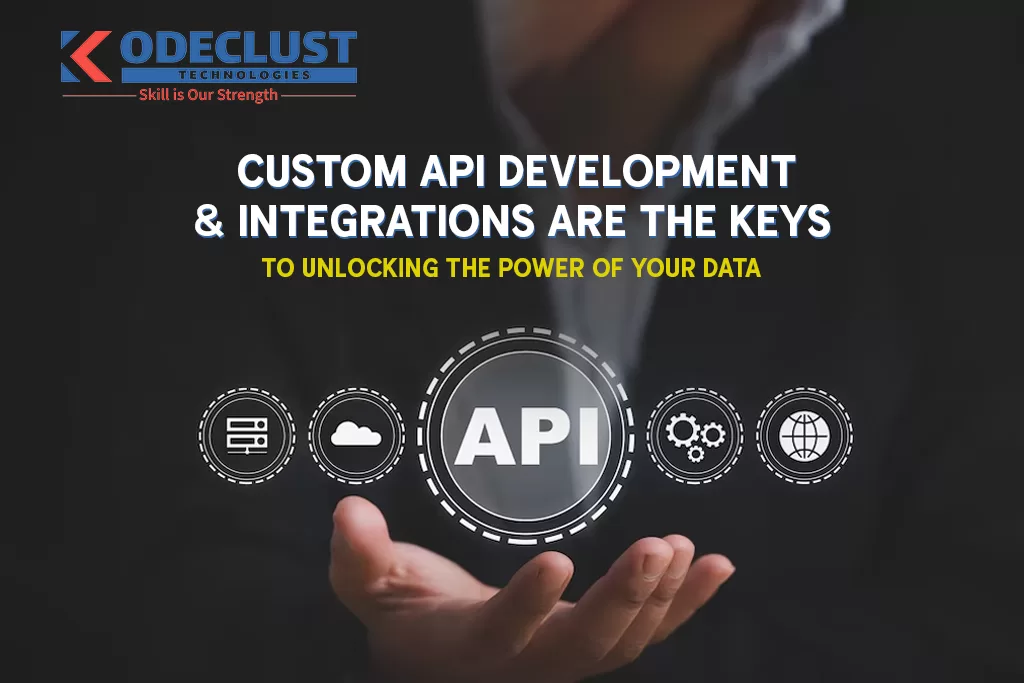Introduction:
In today’s technology-driven world, Custom API Development and Integration Services (Application Programming Interfaces) have become the backbone of modern software development. Custom APIs enable different systems, applications, and platforms to communicate and share data seamlessly, facilitating smooth user experiences. While standard APIs cater to common requirements, Custom API Development & Integration Services is the key to unlocking the true potential of your business processes. In this blog, we will delve into the world of Custom API Development & Integration, exploring the best practices for designing and developing APIs, ensuring data security, and establishing efficient integration patterns.
- Best Practices for Designing and Developing Custom APIs:
Custom API development starts with a solid design process that considers the specific requirements of your application or system. Below are some best practices to follow for designing and developing APIs:
- Define Clear Objectives: Identify the core purpose and functionalities of the API. A clear understanding of the goals helps in creating an efficient and focused API.
- RESTful Architecture: Embrace REST (Representational State Transfer) architectural style for APIs. It offers simplicity, scalability, and ease of use, making it a preferred choice for most modern applications.
- Versioning: Plan for future changes and updates by incorporating versioning in the API design. This ensures backward compatibility and a smooth transition for users.
- Consistent Naming Conventions: Adopt clear and consistent naming conventions for endpoints, methods, and parameters. It enhances readability and makes API usage intuitive.
- Error Handling and Status Codes: Implement thorough error handling and use appropriate HTTP status codes to communicate error messages effectively.
- Proper Documentation: Provide comprehensive and user-friendly documentation for your API, including usage instructions, examples, and potential error responses.
- Rate Limiting: Protect your API from abuse by enforcing rate limits to prevent excessive requests from a single client.
- Testing and Monitoring: Rigorously test your API and set up monitoring tools to track performance, detect issues, and ensure reliability.
API Security Best Practices: Protecting Data and Preventing Attacks:
Security is of utmost importance when dealing with Custom APIs as they act as a bridge between different systems, potentially exposing sensitive data. Here are essential API security best practices:
- Authentication and Authorization: Enforce strong authentication mechanisms such as OAuth 2.0 to ensure that only authorized users or applications can access your API.
- Input Validation: Validate and sanitize all input data to prevent common attacks like SQL injection and cross-site scripting (XSS).
- Encryption: Implement data encryption during transmission (TLS/SSL) and storage to protect data from unauthorized access.
- Role-Based Access Control: Implement role-based access control to limit access to certain API endpoints based on user roles and permissions.
- API Keys and Tokens: Use API keys or tokens to identify and authenticate users or applications accessing the API.
- Regular Security Audits: Conduct regular security audits and penetration testing to identify and address potential vulnerabilities.
API Integration Patterns: Connecting Systems and Applications:
Custom API integration patterns are crucial for creating robust connections between different systems and applications. Below are some common integration patterns:
- Request-Response (Synchronous) Integration: The client sends a request to the API, and the API responds with the required data immediately. It is suitable for real-time interactions but may lead to performance issues during high traffic.
- Message-Based (Asynchronous) Integration: In this pattern, messages are sent to a queue, and the processing is done asynchronously. It ensures better scalability and fault tolerance.
- Pub/Sub (Publish-Subscribe) Integration: Publishers send messages to specific topics, and multiple subscribers receive relevant messages. This pattern is ideal for broadcasting information to multiple systems.
- Point-to-Point Integration: Direct integration between two systems, where one system acts as the sender and the other as the receiver.
- RESTful Webhooks: Using webhooks, applications can receive real-time notifications when specific events occur in another system.
Conclusion:
Custom API development and integration services offer unprecedented opportunities for businesses to streamline processes, enhance user experiences, and drive innovation. By following best practices for API design, ensuring robust security measures, and adopting suitable integration patterns, you can unlock the full potential of APIs and stay ahead in today’s competitive landscape. So, embrace the power of Custom API Development & Integration and open the doors to seamless connectivity and boundless possibilities.




